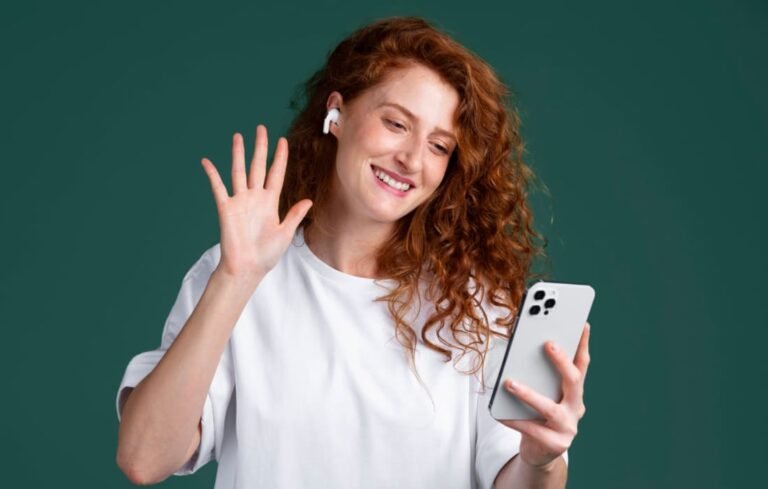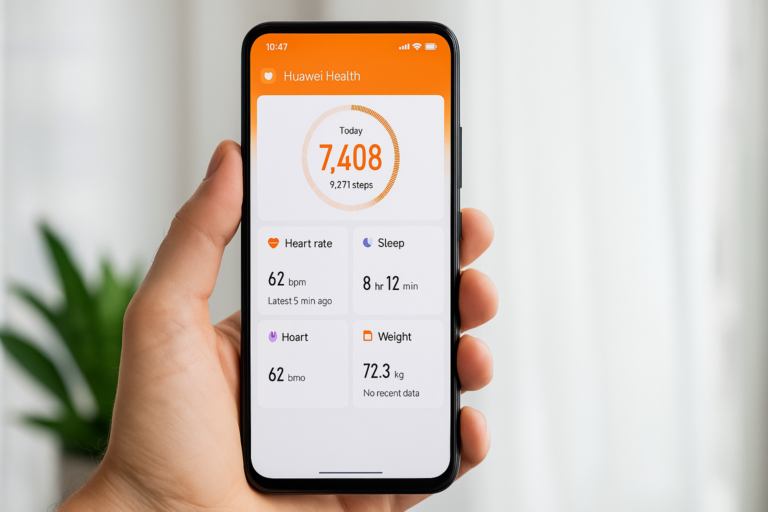“Dang it!” My dad muttered, tapping frantically at his wrist. “This thing says I’ve only slept four hours, but I know I was out cold for at least seven.” I smiled as I watched him fuss with his new smartwatch—a Christmas gift from me and my siblings after his minor heart scare last fall. The same man who once declared technology “a waste of time for people with nothing better to do” was now obsessed with his daily step count and sleep efficiency score.
That’s the thing about these health gadgets that have quietly infiltrated our lives—they transform even the most resistant among us into data-hungry health trackers. What started as simple pedometers has evolved into sophisticated mini-medical devices that live on our wrists, in our pockets, and beside our beds.
From Reluctant Technophobes to Data Devotees
My neighbor Ruth, a retired nurse in her seventies, swore she’d never wear “one of those computer watches.” Six months later, she showed me her heart rate variability trends and explained how they correlated with her meditation practice.
“See this dip here?” she pointed to a graph on her phone. “That was the week my sister was in the hospital. And look how it recovered once I returned to my morning breathing exercises.” Her eyes lit up with the satisfaction of connecting invisible dots in her health story.
These personal transformations are happening everywhere. At my local coffee shop, I overheard two middle-aged men comparing their sleep scores instead of their fantasy football stats. Conversations about soil pH in my mom’s gardening club now mingle with discussions about optimal oxygen saturation levels.
The technology that seemed so foreign just years ago has become as familiar as checking the weather—a new layer of awareness we’ve wrapped around our daily lives.
When Your Watch Knows You’re Sick Before You Do
“Something’s off with your heart rate while you’re sleeping,” my cousin’s watch notified him one morning. He felt fine—maybe a little tired, but nothing alarming. Three days later, he was diagnosed with COVID. His smartwatch had detected subtle changes in his resting heart rate before he experienced a single symptom.
These aren’t rare anomalies. My running buddy Mike ignored the fatigue warnings from his fitness tracker for weeks. “I thought it was just being overprotective,” he told me from his hospital bed, where he was recovering from severe overtraining syndrome that had affected his heart. “Turns out the stupid thing was right.”
The stories pile up: A colleague’s mother whose blood pressure cuff alerted her to dangerously high readings during a particularly stressful week. My hairstylist’s continuous glucose monitor revealed how certain foods were causing unpredictable spikes. My old college roommate’s fertility tracker helped her conceive after years of trying.
These devices have become early warning systems, flagging concerning patterns long before they’d be caught in the typical once-a-year doctor visit. They’re transforming the fundamental rhythm of healthcare from episodic check-ups to continuous conversation.
The Intimacy of Health Data
There’s something profoundly intimate about carrying your health metrics in your pocket. My vitals, patterns, and trends are constantly being recorded and analyzed—creating a digital mirror of my internal state that reflects back aspects of myself I never had access to before.
“I finally understood my insomnia when I saw the graph,” my sister told me after using a sleep tracker for a month. “It wasn’t that I couldn’t fall asleep—I was waking up 15-20 times throughout the night without realizing it.” This insight led her to address her newly diagnosed sleep apnea, changing her quality of life dramatically.
For Sarah, a young mother in my apartment building, her fitness tracker revealed her stress levels spiked every Sunday evening as she prepared for the work week. “I thought I was handling the Sunday scaries just fine,” she said. “But my body was telling a different story.” She now uses Sunday afternoons for guided relaxation instead of frantic meal prep and email catching up.
This intimate knowledge creates a new kind of self-awareness that bridges the gap between how we feel and what’s happening beneath the surface.
When the Numbers Become Too Much
“I had to take it off,” my friend Jason admitted about his high-end fitness watch. “I was checking my recovery score first thing every morning, and when it was low, I’d spend the whole day feeling like garbage—even if I felt perfectly fine physically.”
The shadow side of health tracking emerges in stories like these. My yoga instructor stopped wearing her tracker during practice because “it turned something joyful into a heart rate optimization exercise.” My uncle became so obsessed with closing his activity rings that he paced around the living room at 11:30 PM if he was just short of his goal—much to the annoyance of my aunt trying to sleep.
For some, the measurement becomes the experience. Numbers replace intuition. Scores override sensation. The map becomes mistaken for the territory.
I’ve witnessed this in myself—those moments of absurdity when I’ve felt disappointed by a workout that left me feeling wonderful but didn’t register as “productive” according to my wrist. Or the times I’ve questioned whether I really feel rested despite my sleep tracker’s insistence that I had a “poor quality” night.
Finding the balance between informed and obsessed remains one of the great challenges of this new measured life.
The Kitchen Table Health Revolution
What strikes me most about health gadgets isn’t their technology but how they’ve democratized health knowledge. Conversations that once happened only in doctors’ offices now unfold at dinner tables and on walking paths.
“My resting heart rate has gone up three beats per minute since I started this medication,” I overheard a woman tell her friend at the farmers market. “I’m going to ask my doctor if that’s normal or we should try something else.”
This casual exchange represents a profound shift. Ordinary people now confidently speak the language of health metrics, bringing informed questions and observations to their healthcare providers instead of vague descriptions of symptoms.
When my brother-in-law showed his neurologist six months of tremor data from his specialized tracking device, the doctor adjusted his Parkinson’s medication based on patterns neither would have noticed during a standard fifteen-minute appointment.
“For the first time, I felt like an equal partner in my healthcare,” he told me afterward. “Not just a patient receiving instructions.”
The Human Touch in a Digital World
Despite all this technology, the most successful health gadget stories I’ve encountered maintain a deeply human element.
Take the walking group in my parents’ retirement community. They all wear fitness trackers, but they’ve created a ritual where devices are checked only at the beginning and end of their walks. The middle is reserved for conversation, connection, and enjoying the rhododendrons along their route.
“The gadgets got us started,” explained Gloria, the group’s 83-year-old founder. “But the friendships keep us going.”
Or consider my colleague, who uses his smartwatch’s meditation reminders not to optimize his brain function but as prompts to call his elderly father. “The best thing for my health isn’t the breathing exercise,” he told me. It’s those ten minutes talking to Dad.”
Even my tech-converted father has found his balance. He faithfully tracks his heart metrics but has made a pact not to check them during family dinners or while playing with his grandchildren. “Some moments shouldn’t be measured,” he explained. They should just be lived.”
The Untracked Life
Perhaps that’s the wisdom emerging from our collective experiment with health tracking: the recognition that measurement has tremendous value and apparent limitations.
The numbers can tell us when to push harder or pull back when to seek help or adjust course. They can reveal patterns we’d never notice and connections we’d otherwise miss. But they can’t measure the warmth of morning sunlight during a walk, the restorative power of laughter with old friends, or the heart-filling joy of dancing in your kitchen.
My relationship with health tracking has evolved into something I never expected—a kind of informed intuition. The data helps me understand my body’s signals better but doesn’t override them. It’s a translation tool rather than an instruction manual.
As we navigate this new landscape of constantly available health metrics, perhaps the healthiest approach of all is to use these remarkable tools to enhance our awareness rather than replace it, to inform our choices rather than dictate them.
After all, these gadgets are most valuable not when they control our health journeys but when they empower us to write our own stories—stories that include numbers and measurements but aren’t limited to them, stories that remain fundamentally, gloriously human.
FREQUENTLY ASKED QUESTIONS (FAQ)
What are the most essential health gadgets to invest in for 2025?
The most valuable health gadgets for 2025 include advanced smartwatches with comprehensive health metrics, non-invasive glucose monitors, sleep optimization devices, smart home air quality monitors, and AI-powered fitness equipment that adapts to your progress and goals.
How accurate are wearable health monitoring devices compared to medical-grade equipment?
While consumer health gadgets have significantly improved in accuracy, they typically offer 85-95% accuracy compared to medical devices. They excel at tracking trends over time rather than providing diagnostic-level precision. Always consult healthcare professionals for serious health concerns rather than relying solely on consumer devices
Do health gadgets actually improve wellness outcomes or just create more anxiety?
Research shows that health gadgets can improve wellness outcomes when used mindfully. Users who set realistic goals, focus on trends rather than daily fluctuations, and use the data as a tool rather than a judgment see the most benefits. However, excessive monitoring can create “data anxiety” in some users, so it’s important to find a healthy balance.
What privacy concerns should I consider when using connected health gadgets?
Key privacy considerations include data ownership, security protocols, third-party sharing practices, cloud storage protocols, and the permanence of data deletion. Always review privacy policies before purchasing, use two-factor authentication, regularly update firmware, and consider devices that offer local storage options
Are expensive health gadgets worth the investment or do budget options work just as well?
The value equation depends on your specific needs. High-end devices typically offer greater accuracy, more comprehensive metrics, longer battery life, and better build quality. However, mid-range options often provide 80% of the functionality at half the price. Budget-conscious consumers should prioritize devices that track metrics most relevant to their specific health goals rather than those with the most features









